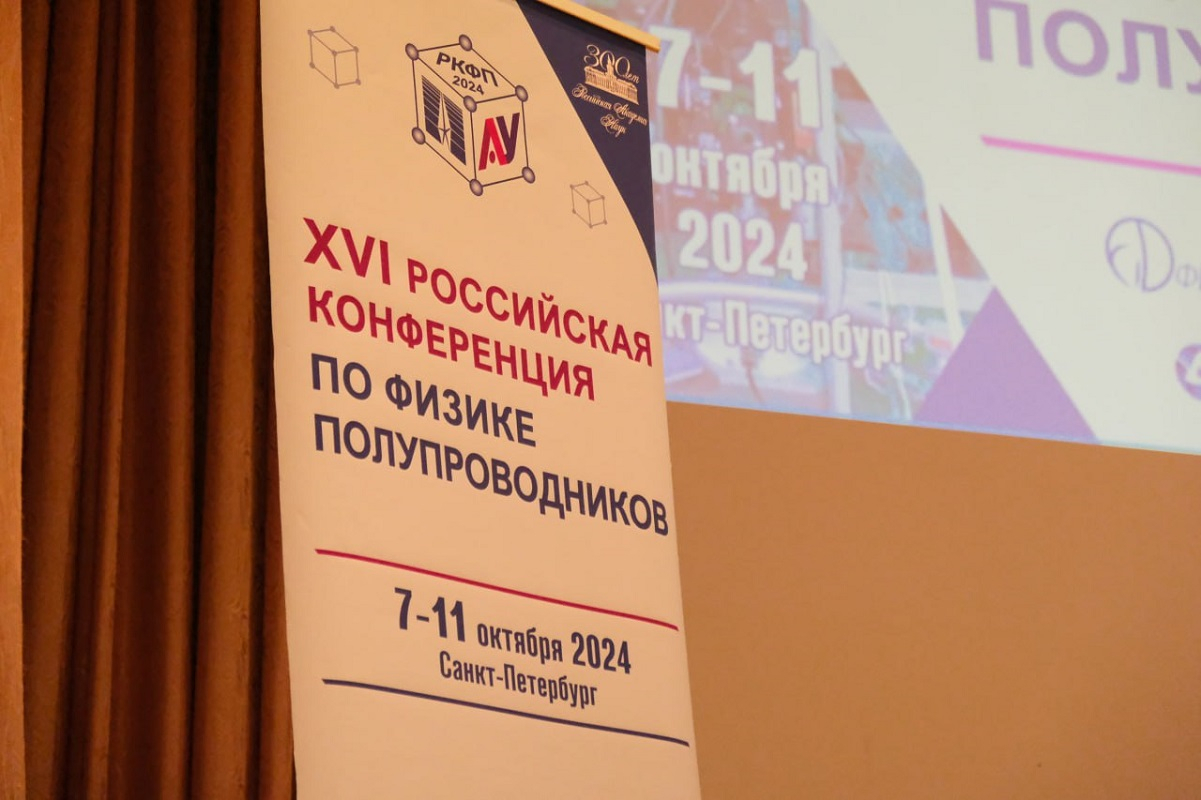Scientists from St Petersburg University increase the efficiency of semiconductor nanostructures for optoelectronics
Experts from St Petersburg University have increased the intensity of photoluminescence for structures made of filamentary nanocrystals with a quantum dot inside, which will make it possible to create more efficient optoelectronic devices. Rodion Reznik, Head of the Laboratory of New Semiconductor Materials for Quantum Informatics and Telecommunications at St Petersburg University, spoke about this at the Russian Conference on Semiconductor Physics.

At the Laboratory of New Semiconductor Materials for Quantum Informatics and Telecommunications at St Petersburg University, scientists grow nanostructures that can be used in quantum cryptography and computing, microelectronics, optoelectronics, medicine, and other fields. These nanostructures include quantum wires, dots and wells.
Alexey Ekimov, a graduate of St Petersburg University, was awarded the Nobel Prize in Chemistry for his discovery of quantum dots.
These structures are produced by molecular beam epitaxy by growing them on various surfaces, including wafers of silicon, a key material in modern microelectronics. The silicon surface is chemically pre-cleaned, then placed in a molecular beam epitaxy unit and the nanostructures are grown under vacuum conditions using sources of extremely pure materials.
The 16th Russian Conference on Semiconductor Physics will be held at Ioffe Institute and Alferov Saint Petersburg National Academic University. This year, more than 360 scientists and experts from 18 cities in Russia and other countries are taking part.
The experts from St Petersburg University also have the ability to grow one nanostructure inside another: for example, quantum dots inside filamentary nanocrystals. This, they say, enables them to create efficient devices that can transmit and process information faster and more accurately. By changing the growth conditions and thus the size of the nanostructures, it is possible to control their physical properties.
For example, the scientists from St Petersburg University have improved the intensity of the photoluminescence (light emitting) of nanostructures with a quantum dot inside a filamentary nanocrystal.
To this end, it is possible to optimise the technology for forming such objects, as well as to improve the properties of already formed nanostructures. For example, we applied a solution of colloidal quantum dots to already prepared filamentary nanocrystals containing quantum dots. The emission intensity increased more than tenfold.
Rodion Reznik, Head of the Laboratory of New Semiconductor Materials for Quantum Informatics and Telecommunications at St Petersburg University
"It is known that there are mechanisms of energy transfer from colloidal quantum dots to other nanostructures. So, we can say that the formed nanostructures get more 'power' for efficient light emission. In our case, the chemical shell of colloidal quantum dots (ligand), which interacts with the surface of the filamentary nanocrystal, also helps," said Rodion Reznik, Head of the Laboratory of New Semiconductor Materials for Quantum Informatics and Telecommunications at St Petersburg University.
Also at the conference, the scientists from St Petersburg University presented the results of research into improving the size uniformity of arrays of filamentary nanocrystals with quantum dots. A new approach to the ordered synthesis of nanostructures was developed. The scientists plan to continue this research to improve the properties of the final structures for their subsequent use in practice.
St Petersburg University, the oldest university in Russia, was founded on 28 January (8 February) 1724. This is the day when Peter the Great issued a decree establishing the University and the Russian Academy of Sciences. Today, St Petersburg University is an internationally recognised centre for education, research and culture. In 2024, St Petersburg University celebrates its 300th anniversary.
The plan of events during the celebration of the anniversary of the University was approved at the meeting of the Organising Committee for the celebration of St Petersburg University’s 300th anniversary. The meeting was chaired by Dmitry Chernyshenko, Deputy Prime Minister of the Russian Federation. Among the events are: the naming of a minor planet in honour of St Petersburg University; the issuance of bank cards with a special design; and the branding of the aircraft of the Rossiya Airlines to name just a few. To mark the 300th anniversary of St Petersburg University, a postage stamp depicting the Twelve Collegia building and the monument to Count Sergey Uvarov was issued. Also, a Soyuz rocket bearing the symbols of the University was launched from the Baikonur Cosmodrome.
By the decision of the Governor of St Petersburg Alexander Beglov, 2024 is a year of the 300th anniversary of St Petersburg University in St Petersburg. On the day of the University’s 300th anniversary torches were lit on the Rostral Columns on the Spit of Vasilyevsky Island. St Petersburg University flags were raised on the Palace Bridge. The city public transport was decorated with the University’s symbols. During St Petersburg’s City Day celebrations in May 2024, St Petersburg University acted as a participating venue. Additionally, the University has launched a website dedicated to the anniversary. The website contains information about outstanding University staff, students, and alumni; scientific achievements; and details of events held as part of the celebration of the 300th anniversary of the University.

